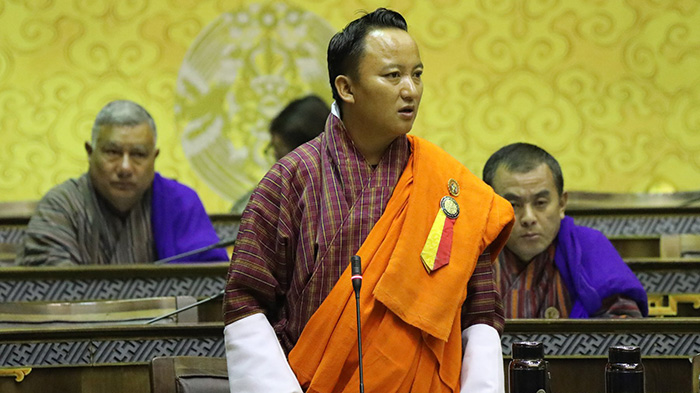MB Subba
During the deliberation on the annual budget 2020-21 in the National Assembly yesterday, Maenbi Tsaenkhar MP Choki Gyeltshen expressed his concerns about the increasing public debt.
He asked how the government would repay the loans. “It’s worrisome that the public debt had increased by Nu 12 billion (B),” he said.
However, Finance Minister Namgay Tshering said that the loans were mostly related to hydropower projects and that they were self-liquidating. Citing the public debt policy of 2016, he said that the non-hydro debt should be within 35 percent of the GDP.
About 75 percent of the public debt, he said, was related to hydropower projects. “We can easily repay the hydropower-based debts. The non-hydro debt now is 25 percent of GDP,” the minister said.
He said that the borrowings from external sources were highly concessional and that they were being used in productive activities. The grace period of the loans, he said, were up to eight years.
The finance minister said that the government would resort to grants as far as possible.
The government, he said, was also aiming to earn USD 250M in two years through carbon trading.
According to the budget report, the public debt as on March 31 stood at Nu 192,962M, which is about 100.8 percent of the fiscal year (FY) 2019-20 GDP.
Of that, Nu 189,663M was external debt and Nu 3,299M domestic debt. The hydropower debt was Nu 141,821M, accounting for 74.8 percent of total external debt and 74.1 percent of the FY 2019-20 GDP.
The hydro debt is expected to increase from Nu 137,004M in June 2019 to Nu 158,653M at the end of FY 2019-20, an increase of 15.8 percent mainly on the account of Mangdechhu hydropower project.
From FY 2020-21, the hydro debt stock is projected to rise on account of loan disbursements for ongoing hydropower projects such as Puna-I, Puna-II, Kholongchu and Nikachu.
The non-hydro debt is expected to increase to Nu 54,950M by the end of FY 2020-21 from Nu 42,110M in FY 2019-20. The increase is mainly due to the project and programme borrowings from ADB, World Bank and IFAD during the FY.
Lyonpo Namgay Tshering said that the depreciation of Ngultrum is also expected to significantly increase the non-hydro debt in FY 2019-20, since the convertible currency-denominated debt accounts for a major portion (87.3 percent) of the non-hydro debt.
According to the budget report, the hydro debt service to hydro export revenue is expected to drop from 23 percent in FY 2018-19 to 8.0 percent in FY 2019-20.
“In the medium term, the hydro debt service to hydro export revenue is expected to rise from FY 2020-21 with the commencement of debt servicing for MHP. Nonetheless, the ratio is projected to remain below the threshold of 40 percent prescribed by the Public Debt Policy,” the budget report states.
The budget report states that while the external borrowings will be from multilateral development banks at concessional terms, the domestic financing will be raised from the domestic market through the issuance of T-Bills and long-term government bonds.


